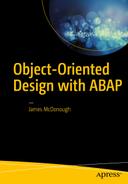It has been a long and winding road from Procedureton, but finally we have reached our destination of Objectropolis.
Establishing Dual Residency
We now are bilingual, having the capability to code using either the procedural or object-oriented paradigms with our work. Now that we understand the basic principles of object-oriented design, we no longer shudder at the thought of having to look at object-oriented code, nor do we recoil from the thought of participating in design discussions where object-oriented concepts are involved.
We have become a full-fledged, object-oriented designers and programmers. Accordingly, we have established dual residency in both Procedureton and Objectropolis. While in Objectropolis we can “talk the talk” and “walk the walk,” having not only learned the lingo but also having embraced the culture of the town.
Beyond Objectropolis
So, where do we go from here? Indeed, is there even a place to go to next?
In my Object-Oriented Chalk Talks classes, I usually start the first lecture by drawing a diagram on the white board of a crude outline of the United States. I select a point on the East Coast (usually on the Florida peninsula) to represent Procedureton, select another point on the West Coast (usually at about where San Francisco might be located) to represent Objectropolis, and then I draw a circuitous path between the two, picking locations along the way to represent the districts of Encapsulation, Abstraction, Inheritance, Polymorphism, and Interfaces. This, I tell the class, represents the path of least resistance from our comfort zone of procedural programming through the basic principles of object-oriented design which we will be covering in the first half of the course.
The intent of the diagram is to show that our journey from Procedureton to Objectropolis is reminiscent of the westward expansion of the United States during the 19th century, where intrepid pioneer families traveled in horse-drawn Conestoga wagons across trails leading to the frontier. Upon arriving in Objectropolis, we still may regard our mode of transportation as being similar to the land-based wagons of those early westward pioneers, to whom the thought of manned flight was not even a remote possibility. We, however, being aware of the possibilities of the 21st century, can easily conceive of manned flight since many of us travel this way on a weekly basis, and although there is no terrain beyond Objectropolis over which we could navigate using the land-based wagons, certainly there are vast regions of the galaxy beyond Objectropolis that await our exploration.
Accordingly, next we will be reaching for the stars. Learning the basic principles of object-oriented design has given us a solid foundation upon which we have been able to improve our software development efforts, but with only these skills we remain tethered to the Earth. The difference between the basic principles of object-oriented programming and the heights we can reach when we use these basic principles with design patterns is the difference between remaining earthbound and traveling throughout the galaxy.
The basic principles have given us the vocabulary, rules of syntax, semantics, and sentence structure to be found in any language. Design patterns enable us to take these words, phrases, and paragraphs and with them create poetry, inspiring oratory, even great works of literature.
Before we embark on such an adventurous voyage into design patterns, first we will get some flight training by becoming familiar with Unified Modeling Language, which will help us with celestial navigation.
